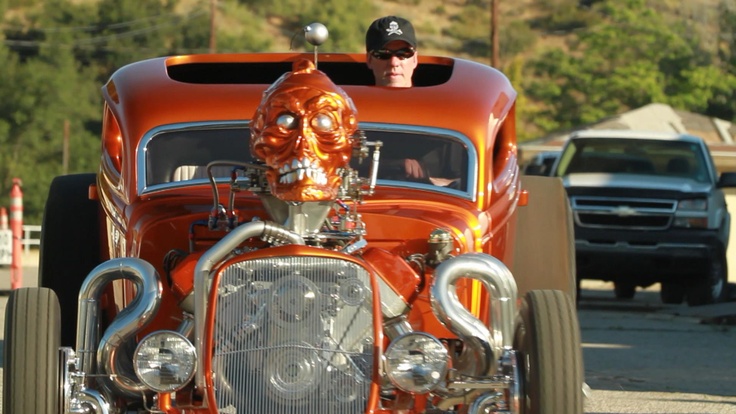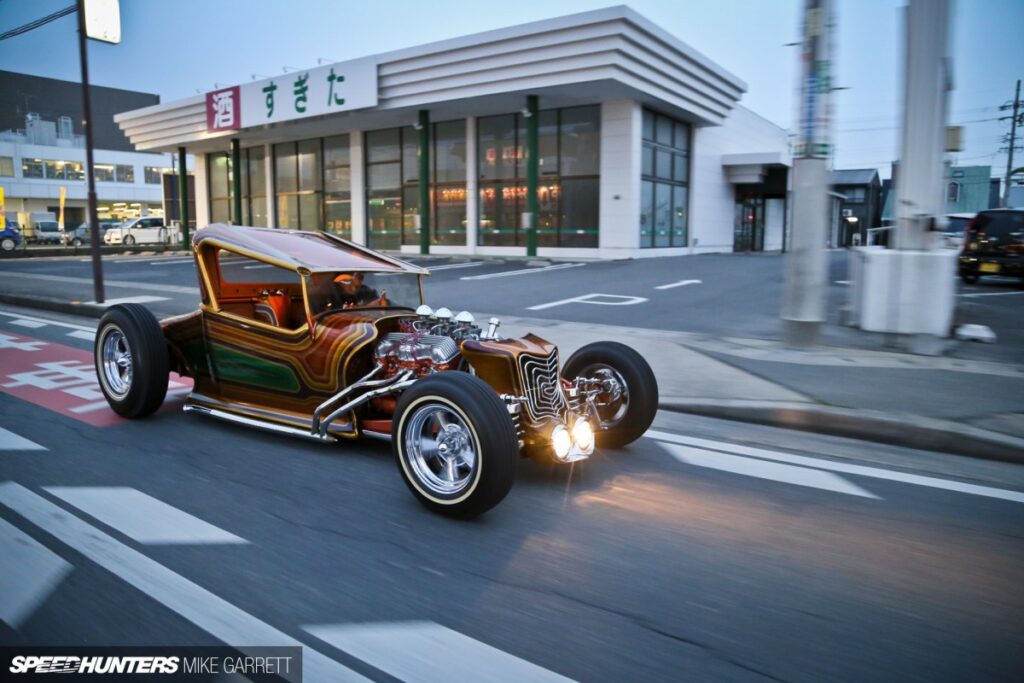Today, let’s talk about the bridging the generations with electric hot rods, authenticity, and the diversity of our hot rod culture. This isn’t just about motor swaps, it’s about exploring how hot rods have an everlasting appeal, both to us old-timers and to a new generation of hot rod enthusiasts.
Sustainability
- Repurposing Vehicles: We’ve been saving these beautiful machines from the scrapyard and turning rust into gold. Hot rodding involves reviving decommissioned, scrapped, or otherwise unused and unloved vehicles. Each car we resurrect from the grave saves valuable resources that would have been used in producing a new, less exciting one. Hot rods are not just about power and performance but also about saving the planet, one hunk of metal at a time.
- Recycling Parts: It’s not just about the whole vehicle, but every little part too. We get creative, recycling and reconditioning parts. Whether they’re original to the vehicle or sourced from somewhere else, we make them work. This way, we’re minimizing waste and consumption of new materials while keeping the spirit of the original beast alive.
- Electric Hot Rods: But we’re not stuck in the past. Volkswagen and Chevrolet are leading the charge with electric crate motors for homebuilt EV hot rods, offering a fresh take on our vintage classics. It’s a fascinating blend of the old and new, preserving the classic aesthetic of a hot rod while embracing the clean energy movement.
- Ease of Maintenance: These vintage models aren’t as complicated as the high-tech machines rolling out today. With simpler designs and mechanical systems and more space under the hood, they’re often easier to maintain and repair. A well-maintained vintage car can outlive many of its modern counterparts, making this another nod to sustainability.

Uniqueness and Authenticity
- Freedom of Design: Whether you like them polished and pristine or rough around the edges, the design is in your hands. Hot rod culture gives you the freedom to unleash your creativity, to project your identity onto your vehicle. You want flames? Go for it. You like pinstripes? Why not? This is your ride, your expression.
- Inclusivity of Rat Rods: And let’s not forget our rat rod brothers and sisters, who showcase the rebellious side of our culture. Rat rods often use parts in ways they weren’t initially intended, resulting in a raw, unconventional aesthetic. The rat rod scene is a testament to the fact that there’s no “wrong” way to build a hot rod!
- Community Support and Respect: No matter the style, we recognize the hard work and passion that goes into each hot rod. Even if tastes differ, there’s a common understanding and mutual respect among enthusiasts. Every build, every hot rod, is a labor of love that deserves recognition.
- Storytelling and History: Every hot rod has a story, and it’s not just about the year and model. It’s about the personal history that we bring to the build. The make, the model, the modifications all reflect the period it represents, the builder’s personal history, or a combination of both.
- Craftsmanship and Skills: Building a hot rod is a journey of self-discovery, a hands-on education that grows with every turn of the wrench. Restoring and modifying an old vehicle fosters a deep appreciation for the skills and creativity involved, pushing you to learn and grow.
- Intersecting Cultures: Our culture doesn’t exist in a vacuum. It crosses paths with other subcultures, like the rockabilly scene, which adds a pinch of vintage fashion, music, and lifestyle to our love for classic cars and hot rods.

Diversity
- Cultural Movements: Over time, hot rodding has reflected societal changes, merging with various cultural movements and trends. It first emerged post-World War II, reflecting a spirit of freedom and rebellion that still holds today.
- Inclusivity and Accessibility: Hot rod culture is for everyone. It doesn’t matter where you’re from, what you look like, or how old you are. The DIY nature of hot rodding, and the knowledge sharing within the community, makes it inclusive and accessible.
- Representation in Media: We’ve been in movies, TV shows, books, and music, spreading our love for hot rods far and wide. This media representation has helped our culture grow and reach different regions.
- Global Influence: What started in the USA now has a global footprint. You’ll find hot rod enthusiasts and events worldwide, adding even more diversity to our beloved culture.

As we shift into the electric era, let’s remember that hot rods are more than just cool cars – they’re a symbol of unity, shared passion, and creativity. They’re driving us towards a sustainable future while preserving the past, allowing us to express our unique selves, and bringing us together across diverse backgrounds. As we rev up for this new journey, remember: hot rods aren’t just about the ride, they’re about the people alongside you, too.